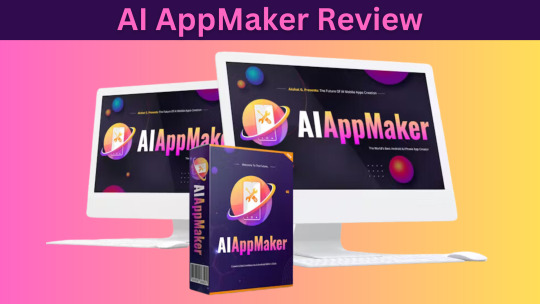#RapidDeveloper
Explore tagged Tumblr posts
Text
5 Practical Benefits of Becoming a Certified Mendix Rapid Developer
The landscape of application development is rapidly changing, with a growing demand for efficient, accessible software solutions. Mendix stands out as a leading low-code platform that enables both experienced developers and newcomers to create applications with ease. As the popularity of low-code development soars, certified developers are becoming increasingly sought after. If you're considering the Mendix Rapid Developer certification, here are five practical benefits that can significantly impact your career, skills, and confidence in low-code development.

1. Build Applications Quickly and Easily
The Mendix Rapid Developer certification equips you with the skills to create applications swiftly, minimizing the need for extensive coding. This transformation is beneficial for both beginners and seasoned developers.
Why is this crucial? Traditional app development is often lengthy and complex, involving numerous coding steps and potential errors. With Mendix's visual, drag-and-drop interface, you can:
Accelerate Development: Create fully functional apps much faster than traditional methods.
Simplify the Process: Focus on app functionality and design without getting bogged down by syntax errors.
Certification ensures you master Mendix's tools, enabling you to design user-friendly interfaces, connect apps to data sources effortlessly, and automate workflows—all of which are vital in today’s fast-paced digital environment.
2. Enhance Your Job Prospects
In a competitive job market, certifications set candidates apart. The Mendix Rapid Developer certification is particularly valuable as businesses increasingly adopt low-code solutions.
Why is this certification significant? As companies across various sectors embrace low-code platforms for efficiency, there’s a heightened demand for certified developers. Earning this certification allows you to:
Demonstrate Proficiency: Showcase your skills in a recognized platform.
Access Diverse Opportunities: Open doors in industries like finance, healthcare, logistics, and retail.
Additionally, even experienced developers can benefit from this certification by highlighting their adaptability to new technologies.
3. Gain Experience Through Real-World Projects
Becoming a Mendix Rapid Developer allows you to engage in real-world projects that directly impact businesses. Mendix is used to develop scalable applications for various purposes, providing a rich learning environment.
Why is this experience valuable? Working on real-world applications helps you:
Build an Impressive Portfolio: Showcase your work to future employers.
Develop Problem-Solving Skills: Learn to troubleshoot and adapt to challenges.
Understand Business Needs: Collaborate with teams to create solutions that drive efficiency.
By working on tangible projects, you’ll enhance both your professional and personal growth.
4. Stay Relevant in a Rapidly Changing Tech Landscape
The tech industry is ever-evolving, making it crucial for developers to stay updated on the latest tools and trends. Earning your Mendix Rapid Developer certification keeps you at the forefront of low-code development.
Why is low-code important? As companies seek to innovate and deliver quickly, low-code platforms have become essential for streamlining development processes. By earning this certification, you will:
Adapt to New Technologies: Showcase your ability to navigate emerging trends.
Remain in Demand: Position yourself as a forward-thinking developer ready for the future.
5. Boost Your Confidence as a Developer
A significant personal benefit of obtaining the Mendix Rapid Developer certification is the confidence it instills. Knowing you possess a recognized certification and the skills to back it up can transform your approach to projects and interactions with clients or team members.
Why does confidence matter? Confidence impacts your ability to tackle new challenges and deliver results. Certification provides a solid foundation, enabling you to:
Approach Projects with Assurance: Build apps efficiently, even under pressure.
Engage with Stakeholders Effectively: Clearly communicate how Mendix can help achieve business goals.
Conclusion
Earning your Mendix Rapid Developer certification offers numerous practical benefits that can enhance your career and boost your confidence. From accelerating app development to expanding job prospects, this certification is a wise investment for anyone looking to thrive in low-code development. Whether you're starting out or seeking to advance your skills, pursuing Mendix certification can pave the way for success in an evolving tech landscape.
Ready to take the next step? Begin your certification journey today and unlock exciting possibilities in the world of low-code development.
#Mendix#LowCode#MendixCertification#RapidDeveloper#AppDevelopment#TechTraining#SoftwareDevelopment#MendixTraining#CareerGrowth#TechSkills#DigitalTransformation#FutureOfWork#AgileDevelopment#TechEducation#mayonacademy
1 note
·
View note
Text
🌱 MVP for your SaaS idea?
Validate faster, launch smarter. SDH builds MVPs that scale.
0 notes
Text

Accelerate Fintech MVP development with FlutterFlow. Compliance-ready features and faster launches. Get started instantly!
0 notes
Text
Revolutionizing Software Development with Low Code Application Development (LCAD) Platforms
In today's fast-paced digital world, businesses must rapidly respond to changing market demands, streamline operations, and continuously innovate. Traditional software development methods often fall short due to long development cycles, high costs, and a heavy reliance on professional developers. This is where Low Code Application Development (LCAD) platforms come into play—reshaping how organizations build and deploy applications.
What is a Low Code Application Development (LCAD) Platform?
A Low Code Application Development platform provides a visual development environment that allows users to create applications with minimal hand-coding. It uses drag-and-drop components, visual workflows, and pre-built templates to accelerate the development process. While traditional coding is still supported for customization, the bulk of application building in LCAD platforms can be accomplished without writing extensive lines of code.
These platforms are designed for both developers and business users (often called "citizen developers") to collaboratively build applications, from simple internal tools to complex enterprise-grade systems.
Key Features of LCAD Platforms
Visual Development Interface A drag-and-drop UI enables users to design apps by arranging elements such as buttons, forms, and logic flows without manual coding.
Reusable Components Pre-built templates, modules, and connectors for databases, APIs, and third-party services drastically reduce development time.
Cross-Platform Compatibility Most LCAD platforms support deployment across multiple environments such as web, mobile, and desktop with a single codebase.
Workflow Automation Built-in tools help automate business workflows, approvals, and notifications, improving operational efficiency.
Scalability and Integration Modern platforms support integration with legacy systems, CRMs, ERPs, and cloud services via APIs, making them enterprise-ready.
Benefits of Low Code Development Platforms
Faster Time-to-Market By minimizing the need for hand-coding, businesses can deploy applications significantly faster, responding swiftly to market changes.
Cost Efficiency Reducing development hours and outsourcing needs helps cut project costs, making digital transformation accessible to smaller firms.
Bridging the IT Skill Gap With IT talent in short supply, LCAD empowers business users and non-developers to build and modify apps without deep technical knowledge.
Enhanced Collaboration Business and IT teams can co-create applications, ensuring that the final product aligns with real-world business needs.
Agility and Flexibility LCAD platforms support iterative development and quick updates, allowing businesses to adapt applications as requirements evolve.
Use Cases Across Industries
Low code platforms are transforming workflows across a wide range of industries:
Finance: Automating loan approvals, compliance workflows, and internal reporting systems.
Healthcare: Building patient engagement apps, appointment scheduling tools, and inventory tracking systems.
Retail: Creating customer loyalty apps, product catalogs, and supply chain management tools.
Manufacturing: Developing dashboards for machine monitoring, order management systems, and safety compliance tools.
Government: Speeding up the development of citizen-facing portals and backend administrative tools.
Popular LCAD Platforms in the Market
Some of the leading LCAD platforms include:
OutSystems: Known for enterprise-grade scalability and robust integration features.
Mendix: Offers a strong collaboration suite and cloud-native deployment capabilities.
Microsoft Power Apps: Seamlessly integrates with the Microsoft ecosystem, making it ideal for Office 365 and Dynamics users.
Appian: Focuses on low code combined with business process management (BPM).
Zoho Creator: Popular among SMEs for its simplicity and affordability.
Each platform comes with unique strengths, and the choice often depends on the business’s size, budget, and integration requirements.
Challenges and Considerations
Despite its many benefits, low code development also comes with challenges:
Vendor Lock-in: Some platforms use proprietary frameworks, making migration difficult.
Security and Governance: Citizen-developed apps must follow IT governance and compliance protocols to avoid security risks.
Limited Customization: For highly complex applications, low code might not provide the level of customization a full-code approach can offer.
To mitigate these risks, organizations should define clear policies, offer training, and involve IT teams in governance.
The Future of LCAD
As digital transformation continues to accelerate, the demand for rapid, scalable application development will only grow. Gartner predicts that by 2026, over 75% of new applications will be developed using low code tools, up from 25% in 2020.
With advancements in AI, machine learning, and automation being integrated into LCAD platforms, the future points toward hyperautomation, where end-to-end business processes can be rapidly digitized with minimal effort.
Conclusion
Low Code Application Development platforms are democratizing software creation, enabling businesses of all sizes to innovate faster and more efficiently. While not a replacement for traditional development in every scenario, LCAD is an essential tool in the modern enterprise tech stack. By empowering more people to build and iterate on applications, organizations can reduce IT bottlenecks, boost agility, and drive real digital transformation.
#LowCode#AppDevelopment#DigitalTransformation#CitizenDeveloper#RapidDevelopment#BusinessAutomation#NoCodePlatform
0 notes
Text
A Perfect MVP = No Looking Back. Here’s How
Your MVP isn't just a starting point — it's your foundation. When built with precision, the right tools, and user-focused insights, it becomes something timeless. In this video, you'll learn: Why perfecting your MVP upfront matters How to use AI & Flutter for speed and efficiency The top mistakes to avoid (like ignoring feedback!) How to scale without going back to square one Build it once. Build it right. Then grow.
#MVPDevelopment#BuildItRight#ScalableMVP#StartupSuccess#ProductStrategy#AIinTech#FlutterDevelopment#AIPoweredApps#RapidDevelopment#TechStartup#UserFirst#LaunchFast#GrowSmart#BuildToScale#NoLookingBack#EntrepreneurTips#StartupLife#FoundersJourney#ProductDevelopment#LeanStartup
0 notes
Text
Faster Innovation, Improved Productivity and Reduced Costs with Low-Code Development Services
You can get your applications running within a few weeks using low-code/no-code development services, along with reduced development and maintenance costs. LCNC can scale as your business grows and free up your IT teams to focus on high-priority projects, reducing IT backlogs entirely.
Explore More: https://www.veetechnologies.com/services/it-services/product-and-application-development/low-code-no-code-development-services.htm
#LowCode#Innovation#ProductivityBoost#CostSavings#DigitalTransformation#NoCodeRevolution#BusinessAutomation#AgileDevelopment#TechEfficiency#EnterpriseSolutions#SoftwareDevelopment#FutureOfTech#SmartSolutions#RapidDevelopment#ITTransformation
0 notes
Text

“[Ukraine’s Commander-in-Chief, Oleksandr] Syrskyi said that the targets included 129 artillery systems, 221 pieces of radio equipment, and more than 4,000 Russian troops.” ~ @kyivindependent_official 🇺🇦👏💙💛🙏🇺🇦
#Repost @kyivindependent_official with @use.repost_ . . . Ukrainian drones “destroyed or damaged” over 52,000 Russian targets in October, highlighting the increasing impact of unmanned aerial vehicles (UAVs) on the battlefield, Ukraine’s Commander-in-Chief Oleksandr Syrskyi said on Nov. 9.
Syrskyi said that the targets included 129 artillery systems, 221 pieces of radio equipment, and more than 4,000 Russian troops.
“Drone technology is developing rapidly, and we must be one step ahead of the enemy,” the general said after a monthly meeting with commanders of drone units.
Syrskyi’s statement comes as Ukraine intensifies its attacks both in Russian-occupied territories and in Russia. On Nov. 9, Ukrainian drones struck the Aleksinsky chemical plant, which produces gunpowder and ammunition for the Russian military, in Russia’s Tula Oblast, sources at the Security Service of Ukraine (SBU) told the Kyiv Independent.
Ukraine is using drone technology to gain an advantage on the battlefield, where its outnumbered and outgunned troops are gradually pulling back.
But despite being limited to the use of long-range kamikaze drones, Kyiv has scored some spectacular success in recent weeks.
One of the largest explosions of the full-scale invasion saw, in the words of a Security Service of Ukraine (SBU) source, an ammunition warehouse "literally wiped off the face of the earth" in Tver Oblast last month.
This came just days after Ukraine confirmed attacks on two other arms depots, with the U.K. Defense Ministry saying that the combined strikes caused "the largest loss of ammunition" in Russia during its all-out war against Ukraine.
Photo: Diego Herrera Carcedo/Anadolu/Getty Images
13h
#ukraine#ukrainiandrones#unmannedaerialvehicles#uavs#increasingimpact#russiantargets#damaged#destroyed#over52thousand#october#ukrainiancommanderinchief#oleksandrsyrskyi#artillerysystems#radioequipment#russiantroops#dronetechnology#rapiddevelopment#aleksinskychemicalplant#spectacularsuccesses#kyivindependent#kyivindependent_official#armukrainenow#patriotssavelives#letukrainestrikeback#standwithukraine#supporukraine#untilvictory
0 notes
Text
-Develop a premium education website in 2 minutes! Using Educavo-Education WordPress Theme 🚀
Theme Link
#PremiumEducationWebsite#Educavo#WordPressTheme#EducationWebsite#LearnToBuild#WebDesign#RapidDevelopment#ContentCreation#OnlineLearning#UserFriendly#TimeSaver#TechEasy#WebsiteDesign#ProfessionalSite#FastBuilding#DigitalEducation#SocialMediaMarketing#Entrepreneurship#EdTech#EducationalResources#consulting business wordpress theme#premium wordpress theme#education & online course wordpress theme#wordpress premium themes#premium wordpress themes#wordpress plugins#online learning wordpress theme#education wordpress theme#paid wordpress themes#app landing wordpress theme
0 notes
Text
Hire Python Developers | Boost the Potential of Your Projects | Feathersoft Inc Solutions

In today's fast-paced digital landscape, having a robust and efficient software solution is critical for business success. Python, known for its simplicity and versatility, has become a favorite among developers and businesses alike. Whether you are a startup aiming for rapid prototyping or an established enterprise seeking scalable solutions, Hire a Python developer can be a game-changer. Here, we delve into the benefits of hiring Python developers and how to find the best talent for your needs.
Why Hire Python Developers?
1. Versatility and Flexibility
Python is a multi-paradigm programming language, meaning it supports various programming approaches, including procedural, object-oriented, and functional programming. This versatility makes it suitable for a wide range of applications, from web development and data analysis to artificial intelligence and machine learning.
2. Rapid Development
Python's simple and readable syntax allows developers to write code faster and more efficiently. This rapid development capability is especially beneficial for startups and businesses looking to launch their products quickly without compromising on quality.
3. Large and Active Community
Python boasts a large and active community of developers. This community-driven support means that you can easily find libraries, frameworks, and tools that can speed up development and solve common challenges. Additionally, a vibrant community ensures that Python is continuously updated and improved.
4. Strong in Data Science and Machine Learning
Python has become the de facto language for data science and machine learning. Libraries like Pandas, NumPy, TensorFlow, and scikit-learn make Python an excellent choice for projects involving data analysis, predictive modeling, and AI.
How to Find the Best Python Developers
1. Define Your Project Requirements
Before starting your search, clearly define your project requirements. Determine the scope of work, the skills needed, and the experience level required. This clarity will help you identify the right candidates and streamline the hiring process.
2. Leverage Online Platforms
Utilize online platforms like LinkedIn, GitHub, and Stack Overflow to find talented Python developers. These platforms allow you to review the profiles, portfolios, and contributions of potential candidates, helping you assess their skills and suitability for your project.
3. Collaborate with Offshore Development Teams
Collaborating with an offshore software development service can provide access to a global talent pool. Offshore teams often offer cost-effective solutions without compromising on quality. They bring diverse expertise and can scale up quickly to meet your project demands.
4. Conduct Thorough Interviews
Once you have shortlisted candidates, conduct thorough interviews to assess their technical skills, problem-solving abilities, and cultural fit. Consider including coding tests and practical assessments to evaluate their proficiency in Python.
Conclusion
Hiring Python developers can significantly enhance your project's success by leveraging the language's versatility, rapid development capabilities, and strong community support. Whether you choose to hire locally or engage with an offshore software development service, finding the right talent is crucial for achieving your business goals. By following a structured approach to hiring, you can ensure that you bring on board skilled developers who can drive innovation and deliver high-quality solutions.
Website : https://www.feathersoft.com/
#HirePythonDevelopers#PythonDevelopment#SoftwareDevelopment#OffshoreDevelopment#PythonProgramming#TechTalent#WebDevelopment#DataScience#MachineLearning#PythonCommunity#AIProgramming#RapidDevelopment#CodingExperts#TechHiring#DevelopmentServices#techsolutions#appdevelopmentcompany#mobileappdevelopment#techinnovation#mobilesolutions#techexperts#appdesign#appdevelopmentservices
0 notes
Text
AI AppMaker Review: Create & Sell Unlimited iOS/Android Mobile Apps In Just 2 Minutes!
Welcome to my AI AppMaker review. In today’s fast-paced digital world, staying ahead of the curve entails embracing tools and technologies that can simplify and expedite processes. One such revolutionary tool is AI AppMaker.
If you’re keen to transform your app development process and create professional-grade mobile apps with zero technical skills, this product promises to be a game-changer. Dive into our detailed review to understand what AI AppMaker is, how it works, its features, functionalities, pricing, and user experience.
We’ll also analyze its strengths and weaknesses to help you decide if it’s the right tool for your app and why it could be the ideal solution for you.
Read the full review here>>>

#AIAppMaker#AppDevelopment#MobileAppBuilder#NoCodingRequired#DragAndDrop#AItechnology#iOSApps#AndroidApps#CustomApps#AppMonetization#UserFriendly#RapidDevelopment#TechInnovation#AppDevelopmentTool#DigitalTransformation
0 notes
Text
#USSLLC#LowCode#NoCode#TechInnovation#SoftwareDevelopment#DigitalTransformation#TechIndustry#RapidDevelopment#CostEfficiency#UserEmpowerment#Collaboration#ScalableSolutions#FutureOfTech
0 notes
Text
🖥️ 𝗧𝗵𝗲 𝗨𝗹𝘁𝗶𝗺𝗮𝘁𝗲 𝗣𝗿𝗼𝗰𝗲𝘀𝘀 𝗚𝘂𝗶𝗱𝗲 𝗳𝗼𝗿 𝗥𝗮𝗽𝗶𝗱 𝗲-𝗟𝗲𝗮𝗿𝗻𝗶𝗻𝗴 𝗗𝗲𝘃𝗲𝗹𝗼𝗽𝗺𝗲𝗻𝘁 ⚡🎓
🔍 Discover the power of rapid eLearning development! 🌟 Create dynamic online courses in no time using cutting-edge authoring tools and templates. 🤝 Join millions of users embracing this efficient mode of eLearning. 👋 Say goodbye to traditional learning methods and hello to the future of education! 💻📚
🔗 𝙍𝙚𝙖𝙙 𝙩𝙝𝙚 𝙛𝙪𝙡𝙡 𝙖𝙧𝙩𝙞𝙘𝙡𝙚 𝙪𝙨𝙞𝙣𝙜 𝙩𝙝𝙚 𝙗𝙚𝙡𝙤𝙬 𝙡𝙞𝙣𝙠! https://www.swiftelearningservices.com/rapid-elearning-development-the-ultimate-process-guide/
👉 𝙑𝙞𝙨𝙞𝙩 𝙤𝙪𝙧 𝙬𝙚𝙗𝙨𝙞𝙩𝙚 𝙛𝙤𝙧 𝙢𝙤𝙧𝙚 𝙞𝙣𝙨𝙞𝙜𝙝𝙩𝙨: https://www.swiftelearningservices.com/
0 notes
Text
What is the significance of Java frameworks like Spring in full stack development?
Java frameworks, particularly Spring, play a crucial role in full-stack development by providing a comprehensive set of tools and libraries that simplify the process of building robust, scalable, and maintainable web applications. Here are several key aspects highlighting the significance of Java frameworks like Spring in full-stack development:
Modularity and Reusability:
Spring Modules: Spring is designed as a modular framework with various modules such as Spring Core, Spring MVC, Spring Security, and more. This modularity allows developers to pick and choose the components they need, promoting a modular and reusable codebase.
Dependency Injection (DI):
Inversion of Control (IoC): Spring implements the IoC design pattern through dependency injection. This helps in reducing the coupling between components, making the code more maintainable and testable. Developers can easily manage and inject dependencies into components, promoting a more flexible and scalable architecture.
Aspect-Oriented Programming (AOP):
Cross-Cutting Concerns: Spring provides AOP support, allowing developers to separate cross-cutting concerns (e.g., logging, security, transaction management) from the core business logic. This enhances code modularity and maintainability.
Data Access:
Spring Data: For data access, Spring offers the Spring Data module, which simplifies database operations. It supports various data sources and provides a consistent programming model, reducing boilerplate code and enhancing developer productivity.
Model-View-Controller (MVC):
Spring MVC: For building web applications, Spring MVC offers a powerful and flexible MVC framework. It promotes the separation of concerns between the model, view, and controller, making it easier to manage and maintain the codebase.
Transaction Management:
Declarative Transaction Management: Spring simplifies transaction management through annotations and XML configuration, allowing developers to define transactional behavior declaratively. This helps in maintaining data integrity in complex business operations.
Security:
Spring Security: Security is a critical aspect of web applications. Spring Security provides comprehensive security services for Java EE-based enterprise software applications. It offers features such as authentication, authorization, and protection against common security vulnerabilities.
Integration with Other Technologies:
Integration Capabilities: Spring can be easily integrated with various technologies and frameworks. For example, it can integrate seamlessly with Hibernate for ORM, Apache Camel for integration patterns, and many other third-party libraries, making it versatile for different project requirements.
Testing Support:
Unit Testing: Spring's design principles, such as dependency injection, make it easier to write unit tests for components. Spring's testing support, along with the use of interfaces and abstractions, facilitates the creation of testable and maintainable code.
Community and Ecosystem:
Active Community: Spring has a large and active community of developers, which means that there is extensive documentation, forums, and third-party resources available. This community support is valuable for troubleshooting, learning, and staying updated on best practices.
Java frameworks like Spring not only provide a solid foundation for building applications but also evolve to address emerging challenges and technologies, making them a reliable choice for full-stack development. In summary, Java frameworks like Spring provide a robust foundation for full-stack development by offering modularity, abstraction, and a wide range of features that simplify the development process. They contribute to the creation of scalable, maintainable, and secure applications, making them a preferred choice in the Java ecosystem for building enterprise-level systems.
#magistersign#JavaFrameworks#SpringFramework#FullStackDevelopment#ModularityInCode#DependencyInjection#InversionOfControl#RapidDevelopment#CodeAbstraction#CommunitySupport#SecurityInDevelopment#ScalableApplications#CrossCuttingConcerns#TestingInJava
0 notes
Text

The way Low Code Application Platform is increasing in its importance, studies predict that by the year 2025, the market is set to grow by about $32 billion with a 19% compound annual growth rate.
#lowcode#applicationplatform#softwaredevelopment#nocode#digitaltransformation#appdevelopment#businessautomation#rapiddevelopment#citizendevelopers#innovation
0 notes
Text

🚀 Build web apps faster with low-code/no-code platforms! 🌐
These game-changing tools are revolutionizing the way we create web apps—empowering businesses to innovate quickly, reduce costs, and involve non-technical teams in the development process. Whether you're building an MVP or internal tools, low-code/no-code platforms help you move from idea to execution in record time! 💡
#LowCode #NoCode #WebDevelopment #TechInnovation #MVP #AppDevelopment #DigitalTransformation #BusinessGrowth #NoCodeRevolution #StartupLife #Innovation #TechTrends #RapidDevelopment #FutureOfWork #Productivity
0 notes
Text
Silpa Greenfields, which is positioned in a prime location near Jogipet Clock Tower and close to reputed institutions, is fast developing and becoming Hyderabad’s New Growth Corridor.
#primelocation #luxuryliving #ReputedInstitutionsNearby #rapiddevelopment #nature #Amenities #NatureEscape #Hyderabad #isnapur #jogipet
#SilpaInfratech #silpagreenfields #silpawhistlingwoods #SilpaAranya
0 notes